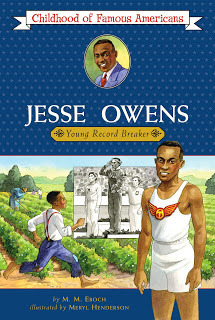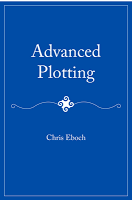Creating a Strong Voice: Use Dialog to Show
I've talked about using the five senses to "show" rather than tell. I also talked about using strong and specific nouns and verbs, being cautious with adjectives, and generally avoiding adverbs. All this comes together especially well with dialogue.
Sometimes authors try to avoid the repetitiveness of "said" by using a lot of alternatives. Although writers may notice how the times they use "said," the word virtually disappears during dialogue scenes. The reader won't notice it. On the other hand, they may start to notice if you use a lot of fancy alternatives, such as reply, retort, answer, interject, state and questioned. Those words call attention to themselves, without adding anything to the dialogue.
It's all right to occasionally use dialogue tag verbs that describe the volume or speed of speech, such as yelled, whispered, stuttered. But if everybody is constantly screaming and snorting and sputtering, your characters will look ridiculous rather than realistic, so use these alternatives sparingly.
You should also avoid adding an adverb to "said." This is almost always telling rather than showing. Instead of using "he said angrily," make sure the dialogue conveys anger, or add a bit of action that shows the anger.
Here's an example from my inspirational biography, Jesse Owens Young Record Breaker, written under the name M. M. Eboch:
 A month later, JC could barely breathe with the pressure on his chest. He wondered if he would die. He lay down, gasping, unable to sleep. He heard his parents whispering. "We've got to do something, Henry," his mother said. "You took one of those bumps off his leg once." "But this one's so big!" Mama said. "And it's near his heart." "Emma—" his father started to say. "Don't say it!" "I'm going to say it," his father insisted. "If the Lord wants him—" His mother interrupted again, her voice rising. "The Lord doesn't want this child."
A month later, JC could barely breathe with the pressure on his chest. He wondered if he would die. He lay down, gasping, unable to sleep. He heard his parents whispering. "We've got to do something, Henry," his mother said. "You took one of those bumps off his leg once." "But this one's so big!" Mama said. "And it's near his heart." "Emma—" his father started to say. "Don't say it!" "I'm going to say it," his father insisted. "If the Lord wants him—" His mother interrupted again, her voice rising. "The Lord doesn't want this child."Do you get a sense of his parents' emotions, and even their differing personalities, just based on the words they speak?
To make your dialogue read more smoothly, you can occasionally cut the dialogue tag altogether, if it's clear who's speaking. If two people are having a conversation, and you are punctuating your dialogue properly, we know that the speaker is alternating in every paragraph. Identify the speaker roughly every third time and the reader should be able to keep track. (With the youngest readers, you may want to err on the side of identifying the speaker every time, for clarity.)
Coincidentally, the day after I wrote this I read a blog post on Dialogue Nuts & Bolts by Jodie Renner. She says some of the same things I do, so you know they must be true. Plus she offers detailed instruction on the technical aspects of punctuating dialogue, so if you are not sure when and where to use which type of punctuation, check out her post.
 Assignment: Write about two people at a party, showing emotion through dialogue. They could be fighting, flirting, planning mischief... you decide. You can use characters from your current work in progress if you like. Don't name any emotions. If you want to test your work, share the writing with your critique group or other friends. See if people can guess the emotions.
Assignment: Write about two people at a party, showing emotion through dialogue. They could be fighting, flirting, planning mischief... you decide. You can use characters from your current work in progress if you like. Don't name any emotions. If you want to test your work, share the writing with your critique group or other friends. See if people can guess the emotions.Get more writing advice in Advanced Plotting .
Published on December 30, 2011 05:10
No comments have been added yet.



